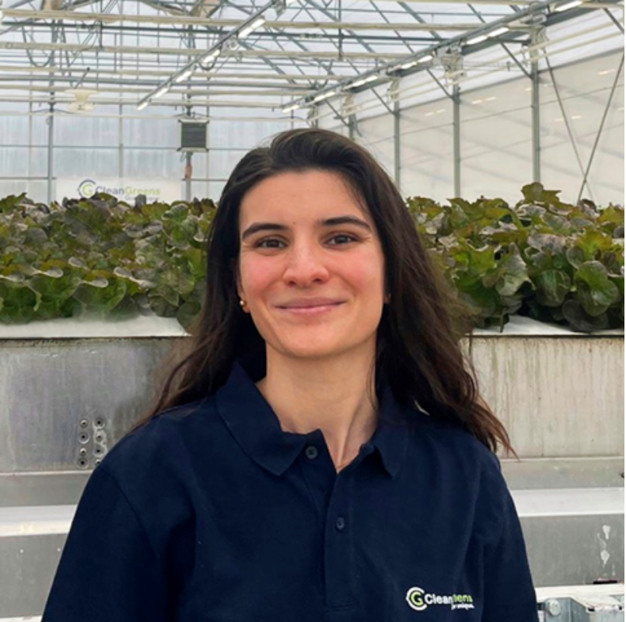 Growers of basil might notice strange spots in the leaves or a decrease in the performance. Estelle Garnier, R&D agronomist at CleanGreens Solutions, explains how to prevent, detect and treat the "Basil Downy Mildew" (BDM) disease.
Growers of basil might notice strange spots in the leaves or a decrease in the performance. Estelle Garnier, R&D agronomist at CleanGreens Solutions, explains how to prevent, detect and treat the "Basil Downy Mildew" (BDM) disease.
"BDM is a fungal disease that affects basil (Ocimum spp.) plants. This disease can destroy entire crops", she explains. "This disease is caused by the fungus Peronospora belbahrii. This pathogen affects both open-field and greenhouse crops. Its development cycle is very rapid, and the disease can infect the entire crop within 48 hours."
Spores are present in the environment in a latent state. "If climatic conditions are favorable (humidity, temperature, sowing density...), the spores germinate, develop, and spread from plant to plant, then throughout the entire greenhouse. As the fungus has a very rapid development cycle with high sporulation rates, spores can spread to the whole crop in record time." She adds the transmission is airborne (by wind), and the pathogen can also be present in seeds.
BDM disease is characterized by various symptoms that lead to the death of the plant. First of all, a yellowing of the leaves is observed (Figure 1a), and a brown fuzz appears on the underside of the leaf (Figure 1b). Brown spots then form on the upper surface of the leaf and spread over the entire leaf. The leaf finally dries out and falls or decomposes on the stem (Figure1c).
The agronomists at CleanGreens Solutions suggest various ways of avoiding or controlling this disease. "The added value of CleanGreens technology is that it was designed by agronomists, for agronomists. We understand perfectly what a plant needs to thrive and be healthy."
 Chronology of the appearance of basil downy mildew symptoms
Chronology of the appearance of basil downy mildew symptoms
Preventive measures include monitoring the crop frequently and eliminating infected plants. Climatic measures include placing plants in an environment that allows optimum growth. "With a relative humidity in the greenhouse < 85%, and plants placed at appropriate growing densities, steps are taken. It's important to ensure good air circulation in the greenhouse to avoid water condensation on leaves, to maintain the right temperature for basil growth, and to avoid wide temperature variations between day and night. And of course the good lighting management in the greenhouse." Also, using varieties resistant to basil mildew are an important tool.
Estelle says there is no specific solution to be sprayed along with water that will prevent or worsen its appearance. "It's above all a question of good climatic management and selecting the right varieties."
CleanGreens developed Greenova to help growers do so. The CleanGreens mobile soilless growing system is designed to grow leafy greens and herbs in greenhouses. This system is neither hydroponics nor vertical farming: it does aeroponics in greenhouses growing horizontally.
Above, the plants are supported by a system of mobile modules that move in an efficient circuit. Below, the roots are sprayed with water and nutrients by a rolling robot. "Thanks to the system, homogeneous production is achieved by producing more, with much less", she shows.
"With our Greenova system we do not alter the natural defenses of the plant thanks to effective management of fertilization and irrigation", she says. "Thus, thanks to our agronomic knowledge and our efficient system, we can make more than 7 cuts on the same basil plant without a drop in yield and with premium quality. This therefore makes it possible to reduce the costs linked to substrates and seeds."
CleanGreens will be present this June at GreenTech Amsterdam at booth 05.348.
For more information:
CleanGreens Solutions
Kai Valkama
Sales and Marketing Director
+41 76 204 54 56
www.cleangreens-aeroponics.com
